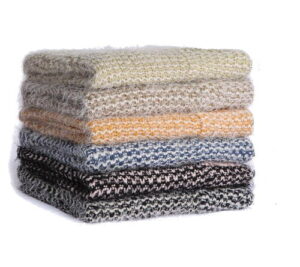So you’ve picked your vacation clothing items, and you’ve tried your best to keep it to a minimum; now you have to get it all in your suitcase!
Most people simply fold their clothing items and layer them in their suitcase any-which-way. There is, however, an art to packing that will protect your clothing from damage and creasing – who wants to be ironing on holiday?– and make your bag much easier to carry through the airport. Packing properly can take up less space in your suitcase so that you can shop more on your holiday. See the various techniques below.
Methods for Folding Clothing
Folding is the most common way to pack, but there are a few tricks to keep in mind.
- Fold shirts by laying them flat, button-side down. Then fold the sleeves and about 2cm of the side back; now fold the sleeve only downwards, so that the cuff points to the hem. Do this on both sides. Now bring the hem up to the collar so that it touches the shoulders of the shirt.
- Fold pants, dresses and long skirts in half and then bring the hem up to the waist.
- Stack similar items on on top of the other.
- If you are worried about a certain garment becoming creased, place it in a black trash bag once folded.
Remember to follow the tips in the next section to learn about ‘weighing’ the items in your suitcase so that it doesn’t topple.
Rolling

Rolling is a good way to pack items that don’t crease easily like jeans, t-shirts, cardigans and so on. Do not roll collared shirts that you usually wear at the office, rather fold them.
To roll an item
- Fold it in half.
- Start to roll it tightly from the hem up to the waist/neck.
- Fold jeans and pants in half with the back pockets facing the outside.
- If it has sleeves, first fold these back and then fold the item in half.
- Zip or button up the garment before folding it in half.
Bundling
This method involves folding clothing items around a soft base.
- Underwear and swimwear cannot be bundled, but all other clothing can.
- Zip or button all garments before bundling; now place them facing up (jackets must be face down).
- Use a packing cube or fill a pouch with socks to make your core.
To make a simple bundle
- Take a top or shirt and lay it on a surface, take a second top and place it facing the opposite direction but so that the sleeves and collar are overlapping, making a + shape. The hem of the first shirt faces north; while the hem of the second faces south.
- Now fold a pair of pants in half and lay it across the arms of the shirt (hem facing west). Lay another pair of pants in the same way but facing east.
- All the items overlap in the centre of the bundle.
- Place your core in the centre and fold the items around the core one by one starting with the second pair of pants up to the first shirt.
- First fold the pants/sleeves in half and then over the cube.
- Bundles can be layered with more items than in the above example, but remember to ‘weigh’ the bundle by using similar items on each side as you create layers. A long skirt, can replace the second pair of pants in the example above.
Placing your clothing in your suitcase

Shoes must be packed along the bottom of the bag where the wheels are. Let the soles face the wheels.
Pack small accessories and socks inside your shoes. Heavy items go next so that when you’re bag is upright it does not topple.
If you rolled and folded: create your first layer with all of your rolled items, then place your folded items on top to create a second layer. Alternate so that the waist section of each items is in the opposite direction to create balance. Thicker items like jerseys are layered right on top. Use all the nooks and crannies to stuff accessories, underwear and swimwear.
If you bundled: simply place your bundle in your suitcase. If you have a few bundles, place them next to one another.
Happy flying!
PackSmartlyDressComfortably









